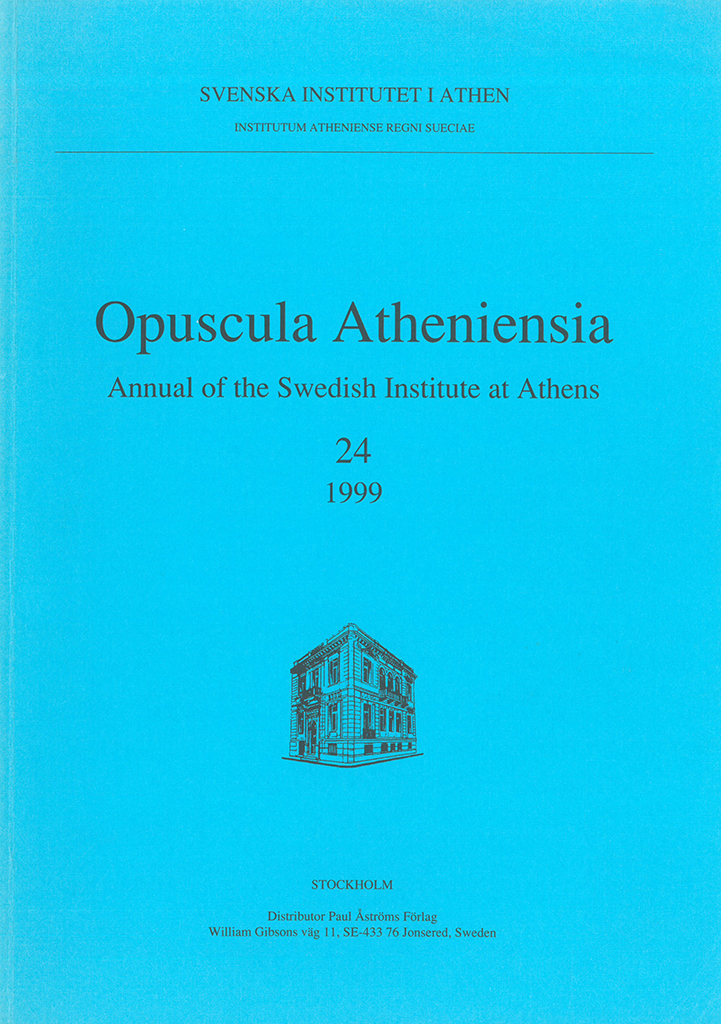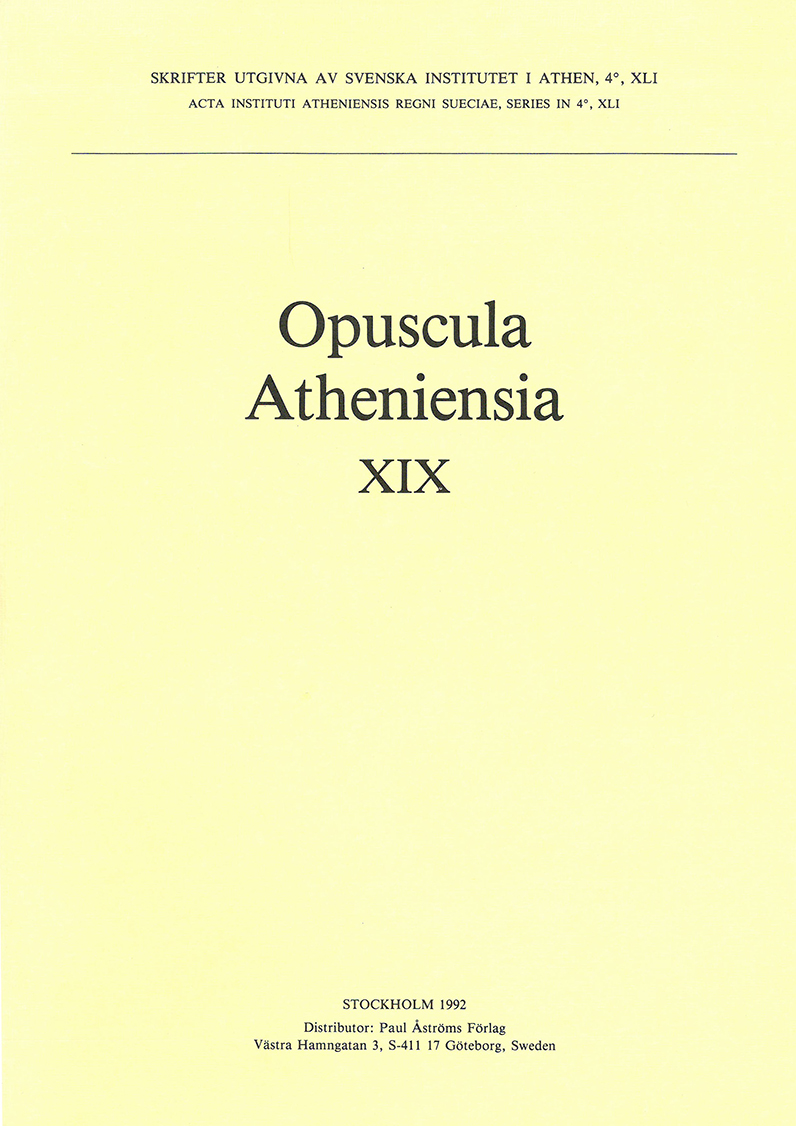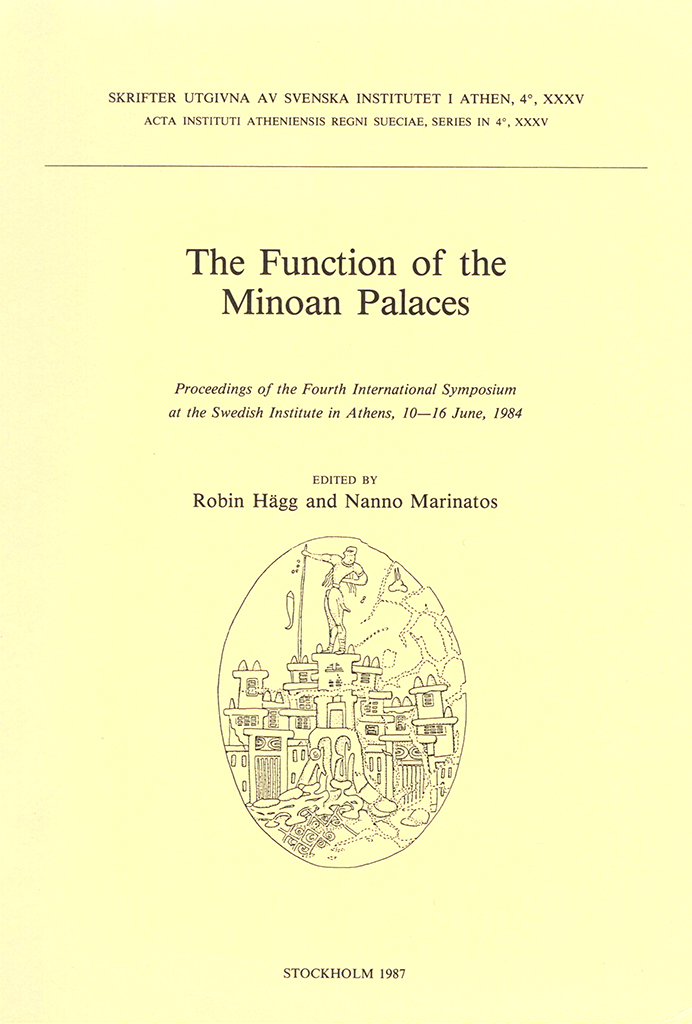Distributed by Astrom Editions. Birgitta Bergquist dedicata Contents Donald W. Jones | The archaeology and economy of Homeric gift exchange Donald W. Jones | The conundrum of Greek population growth in the 8th century B.C. Burials, settlements, and wells Jane F. Lloyd | The three-dimensional form of the light area of the Minoan hall system and the southeast corner of the South Hous at Knossos Jari Pakkanen | Defining the possible column shaft height range and profile. A case study based on the temple of Zeus at Labraunda Eva Rystedt | No words, only pictures. Iconography in the transition between the Bronze Age and the Iron Age in Greece Zofia Stos-Gale, Maria Kayafa & Noel Gale | The origin of metals from the Bronze Age site of Nichoria Lars Walløe | Was the disruption of the Mycenaean world caused by repeated epidemics of bubonic plague? Bookreviews Jeannette Forsén | E. Christmann, Die Deutschen Ausgrabungen auf der Pevkakia-Magula in Thessalien II. Die Frühe Bronzezeit Jeannette Forsén | J.B. Rutter, Lerna III. The pottery of Lerna IV Michael Wedde | K. Sbonias, Frühkretische Siegel. Ansätze für eine Interpretation der sozialpolitischen Entwicklung auf Kreta während der Frühbronzezeit Ann-Louise Schallin | Late Minoan III…
Published by the Swedish Institute at Athens. Distributed by Astrom Editions. Opuscula Atheniensia 19 Contents Carl Nylander, ‘Sture Brunnsåker, 1925–1978’ (p. 9) Paul Åström, Katie Demakopoulou, Nicoletta Divari-Valakou & Peter M. Fischer, ‘Excavations in Midea, 1989–1990’ (pp. 11–22) Gisela Walberg, ‘Excavations on the Lower Terraces at Midea’ (pp. 23–39) Birgitta Bergquist, ‘A particular, Western Greek cult practice? The significance of stele-crowned, sacrificial deposits’ (pp. 41–47) Mary Blomberg, ‘The meaning of Χελιδών in Hesiod’ (pp. 49–57) Robin Hägg & Gullög C. Nordquist, ‘Excavations in the Levendis sector at Asine, 1989. A preliminary report with an appendix on the animal bones by Katrin Moberg’ (pp. 59–68) Tullia Linders, ‘The Delian temple accounts: some observations’ (pp. 69–73) Alexandros Mazarakis Ainian, ‘Nichoria in the south-western Peloponnese: Units VI-1 and IV-5 reconsidered’ (pp. 75–84) Erik Østby, ‘Der dorische Tempel von Pherai’ (pp. 85–113) Paul Rehak, ‘Minoan vessels with figure-eight shields: antecedents to the Knossos throneroom alabastra’ (pp. 115–124) Eva Rystedt, ‘Notes on the rattle scenes on Attic Geometric pottery’ (pp. 125–133) Berit Wells, ‘The walls of Asine’ (pp. 135–142) Charlotte Wikander, ‘Pomp and circumstance. The procession of Ptolemaios II’ (pp. 143–150) Örjan Wikander, ‘Archaic roof-tiles: the first (?) generation’ (pp. 151–161) Miscellanea Åke Åkerström (†),…
View record at WorldCat. The function of the Minoan palaces. Proceedings of the Fourth International Symposium at the Swedish Institute in Athens, 10–16 June, 1984 Edited by Robin Hägg & Nanno Marinatos Fourty-seven papers on the functions of the palace, the most characteristic phenomenon of the Minoan Bronze Age civilization in Crete, read at an international conference in Athens; the papers are followed by transcripts of the discussion of the symposium. The papers are arranged in eight groups, discussing (1) background (Near Eastern and Egyptian economy), parallels (Mycenaean palaces) and methodology; (2) the emergence of the Cretan palaces; (3) the relations of the palace with town and territory; (4) recent archaeological finds; (5) the palaces as ceremonial and religious centres; (6) the palaces as centres of trade and manufacture; (7) the administrative systems of the Minoans and Mycenaeans; and (8) the function of the frescoes in the palace. For James Walter Graham and to the memory of Spyridon Marinatos. Contents Preface (p. 9) Background and methodology Benjamin R. Foster | The Late Bronze Age palace economy: A view from the East (pp. 11–16) Wolfgang Helck | The dissolution of the palace economy in the Ramesside period (pp. 17–19) Klaus Kilian…



